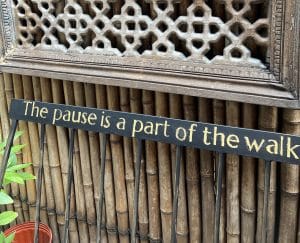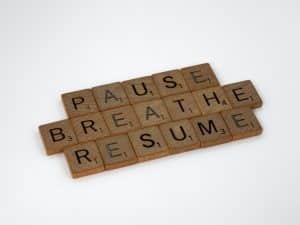
I have a confession to make. I am not the best at sitting still. I mean, don’t get me wrong, I love to sleep. Also fun: hanging out and relaxing. However, when it comes to “formal” meditation, I spend more time on the strugglebus than you might expect. I have as many moments of distraction and mind-wandering as the next person, but I also just get squirmy. It’s not surprising, when you think about it.
Meditation is designed to bring our attention to what’s happening in the present moment. We often do this by connecting to our bodies, usually through our breath. It’s simple, and always accessible, but of course, it doesn’t travel alone. Once we start paying attention to our body, we realize all the other stuff it’s holding on to. Tense shoulders, tight hips, a stiff neck – you name it. We spend so much time not thinking about our body at all that we get used to walking around with (almost literally) the weight of the world on our shoulders. As it does with many things, mindfulness calls that out. At least for me, once I recognize all the places where tension has been camping out, it’s hard to take it sitting still.
If this is sounding familiar to you, first of all, thanks for letting me know I’m not the only one. Second, we both have some options here.
Option #1: You can deal. As you’ve heard me say countless times before, one of the greatest benefits of mindfulness is learning to manage discomfort without immediately fleeing from it. We’re often talking about internal discomfort in the form of negative thoughts or emotions here, but physical discomfort also counts. In fact, it can be a pathway to understanding how to manage internal discomfort. As a friendly reminder, discomfort is different than pain, which you should rarely ever tolerate in the body, as it can be a sign of impending injury. But, wanting to move and simply choosing not to even for a few extra seconds can provide insight into the limitations you set for yourself in your life beyond meditation.
Option #2: You can move. Yes, it is allowed! I mean, it’s your meditation. You’re the boss. The key is to be mindful in your choice of how and when to address the discomfort you may be feeling (see Option Number One). Take the stretch, roll your shoulders back, scratch the itch…do what you need to do to bring your attention back to your breath, or other focus of your meditation. I have personally found that spending a few minutes stretching before I sit down to meditate gets some of the fidgetiness out of my system in advance. Whatever you do, as long as you’re not responding reflexively and unintentionally, you’re being mindful.
Option #3: You can stack the deck in your favor. Make movement the whole point of your meditation. Maybe seated meditation just isn’t your thing. I still say, give it a try now and then to see what you can see from it, but don’t set yourself up for constant self-judgement. Maybe your meditation is all about mindful movement. I’m a big fan of yoga for this option, but you can also look at mindful walking, mindful running, hiking…you name it, you can probably do it mindfully. Yoga in particular is about linking breath with movement, or “asanas” as they are called, but if your intention is to check into the experience (and out of your haphazard thoughts), your surroundings and your body through it, then you are moving mindfully. Dare I say, you are meditating.
While I do think that the stillness of seated meditation has a lot to offer as far as training us to focus, explore our internal terrain, and observe our habitual responses to discomfort, it isn’t all there is. The only mindfulness technique that works is the one you do. Like any kind of training, you have to push your limits a little to experience the growth that is possible through it, but it doesn’t have to be an uphill battle every time.
So go ahead. Get moving. There’s no time like the present.
Photo credit: Jordan Whitt




3 thoughts on “Restless self syndrome”
That title is really cool I like it!
Thanks so much! Appreciate you reading!
Pingback: What not to do | MindfulMBA